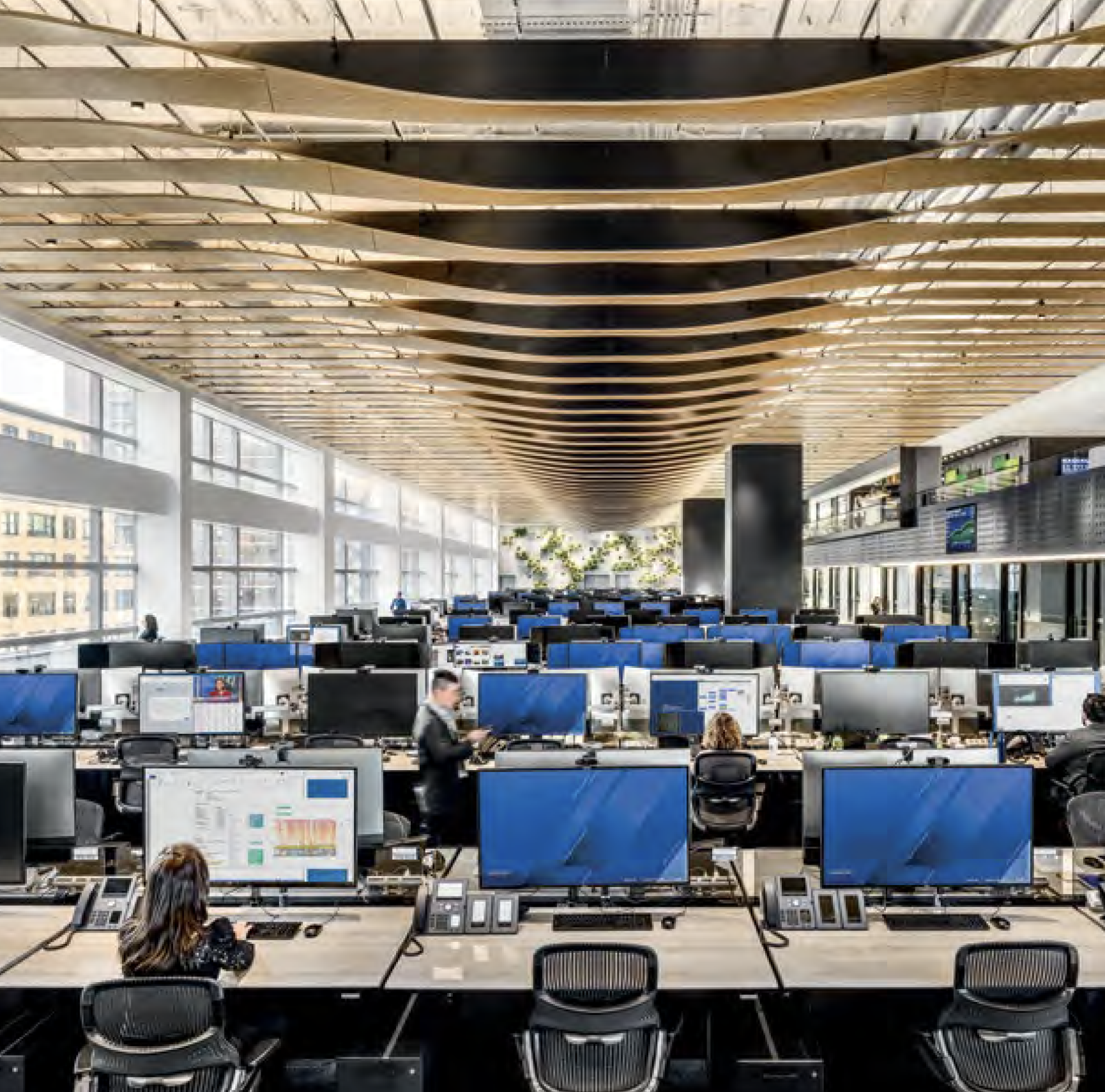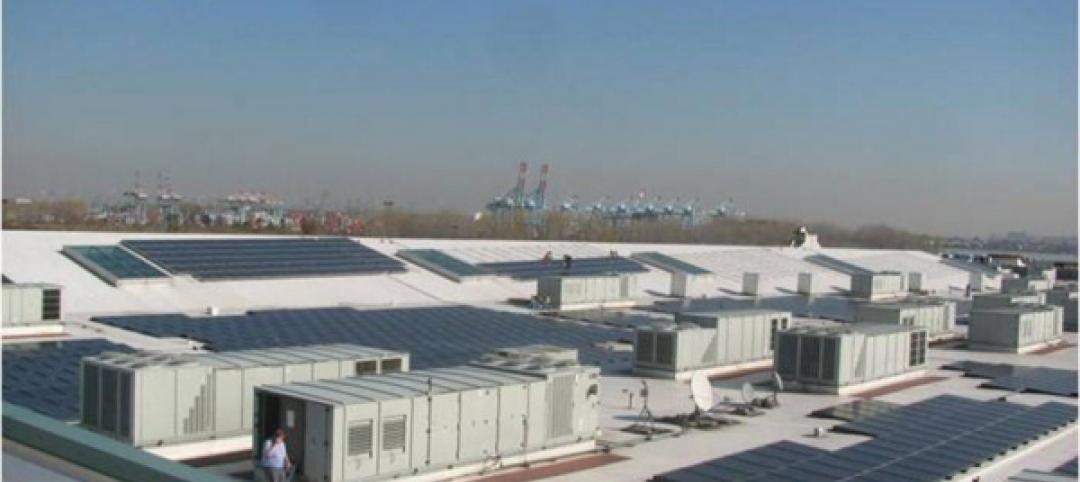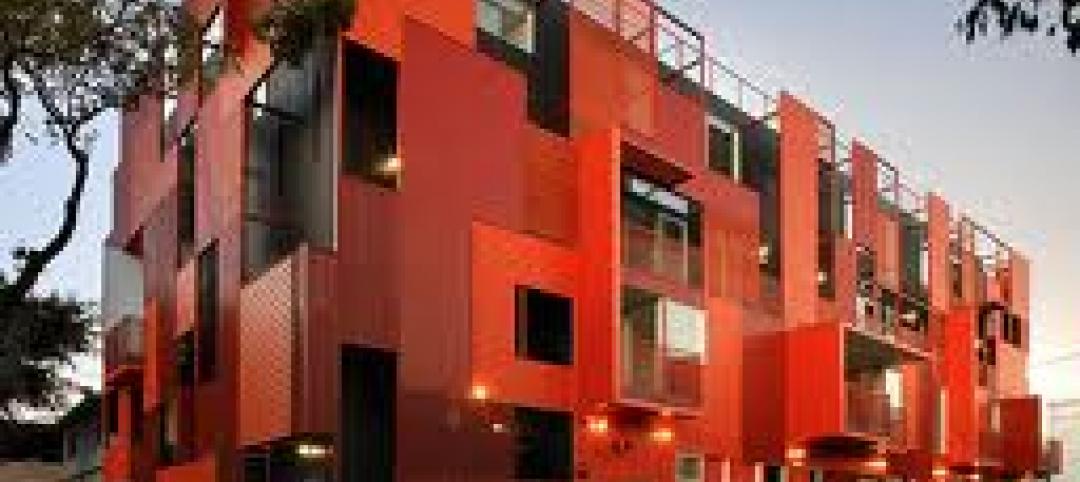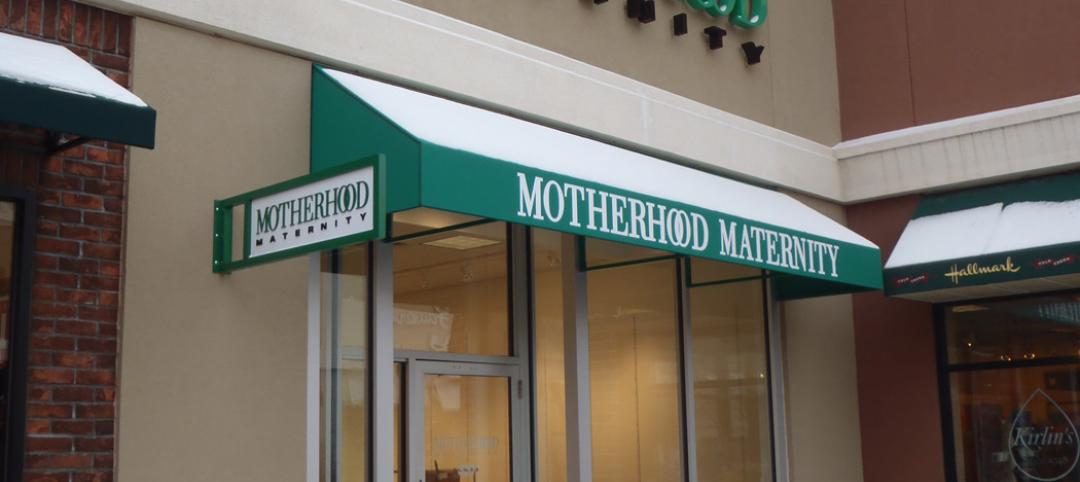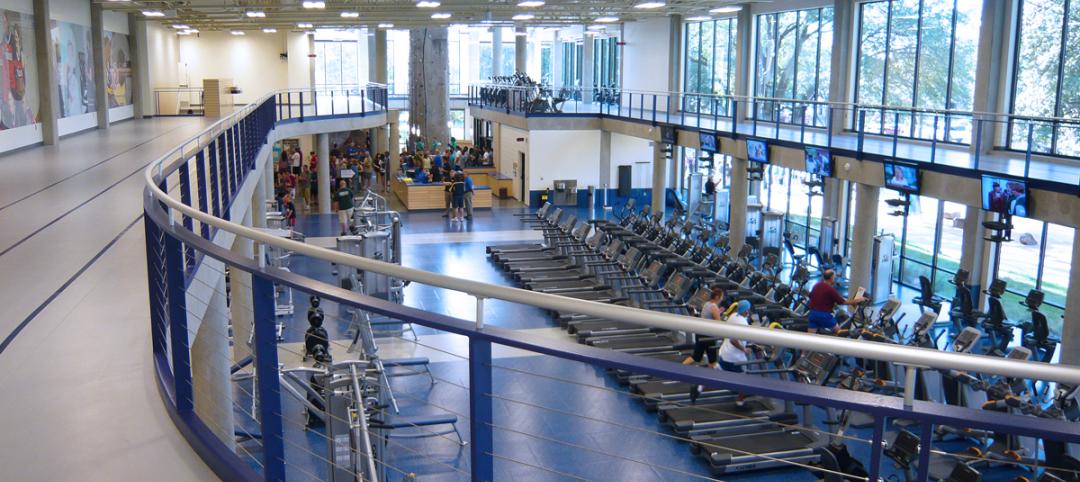Social equity and climate change are the elephants in the room hovering over Gensler’s Design Forecast for 2022, which the giant architecture firm released this week.
Drawing from a wide range of research sources, including its own, Gensler maps out what it sees as the top trends and strategies for its 28 practice areas, organized under the headings Cities, Work, Lifestyle, and Health. (The Report can be downloaded at https://bit.ly/3ILhHxf.)
The report is, in the main, optimistic, with dollops of wishful thinking. But Gensler, which generated $1.235 billion in revenue last year, is also clear-eyed and fact-informed about the challenges that lie ahead and the extent that design can help meet and exceed them. “An ongoing resilience is defining the built environment,” write the firm’s co-CEOs Diane Hoskins, FAIA, IIDA, and Andy Cohen, FAIA.
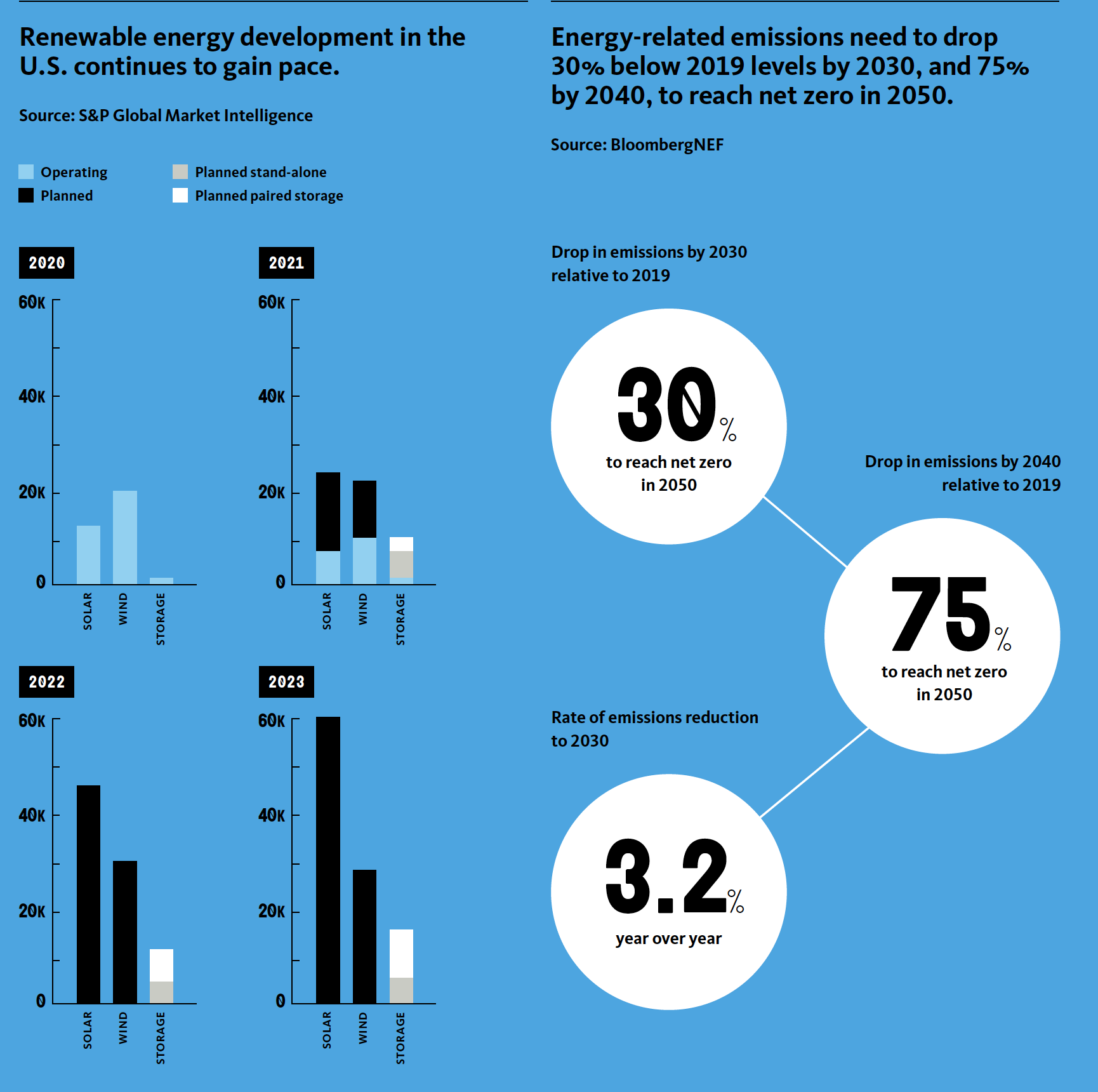
They see a world where innovation is accelerating, where cities are becoming more walkable and greener, where holistic design places greater emphasis on enhancing human experience, and where places “honor local context, while considering the health of occupants and planet alike.” To that end, Gensler has taken action to improve long-term resilience and sustainability of the construction industry’s supply chain by developing a new “blueprint” for specifying lower-carbon products and promoting locally extracted and manufactured materials. Gensler’s stated goal is to achieve carbon neutrality in all its work within a decade. “Never has there been a greater opportunity for the building industry to act on climate change,” the Report states.
STARTLING STATISTICS
The 91-page Design Forecast is a reservoir of information, some of which are likely to stop readers in their tracks. For example, one of the Health sector’s demographic predicaments is that, for the first time in human history, more of the population will be over 65 years old than under 18. “This changes everything,” states Gensler, in terms of how healthcare facilities will be designed to function and serve their constituencies.
Another stat, based on Gensler’ own research, found that fewer than half of the people surveyed in 15 locations are optimistic about their cities’ futures. And in its prognosis for the future of the workplace, Gensler—again drawing from its own research—estimates that, at a time when demand for commercial real estate is in flux, top-performing companies are three times more likely to increase their real estate footprint.
Sprinkled throughout the Forecast are images of Gensler’s projects that, according to the firm, have responded to different needs. For example, the Nashville entertainment district Fifth + Broadway addresses what people want from cities: convenience, community, and accessibility. This mixed-use district blends retail, workplace, residential, restaurants, music, and sports. In Austin, a 140,000-sf built-to-suit office building for Whole Foods Market’s headquarters features extended floor plates that provide interior protection from the sun, public areas with biophilic elements, and an outdoor terrace that doubles as alternative workspace.
20 METATRENDS IN PLAY
Gensler’s Design Forecast revolves around its identification of metatrends that it believes will influence client demand and the firm’s work in each of its sectors and practices. Some of these trends are not new, but have yet to achieve fruition, or have been recast by events such as the COVID-19 pandemic or the so-called Great Resignation that is restirring the job market.
The metatrends, in short, are predicted as follows:
Cities:
•A flexible public realm will deliver a more resilient future
•20-minute neighborhoods will drive equity
•Climate action demands will advance a path to net-zero
•Cities and organizations will refocus on regeneration and reuse
•Innovation districts will continue to thrive
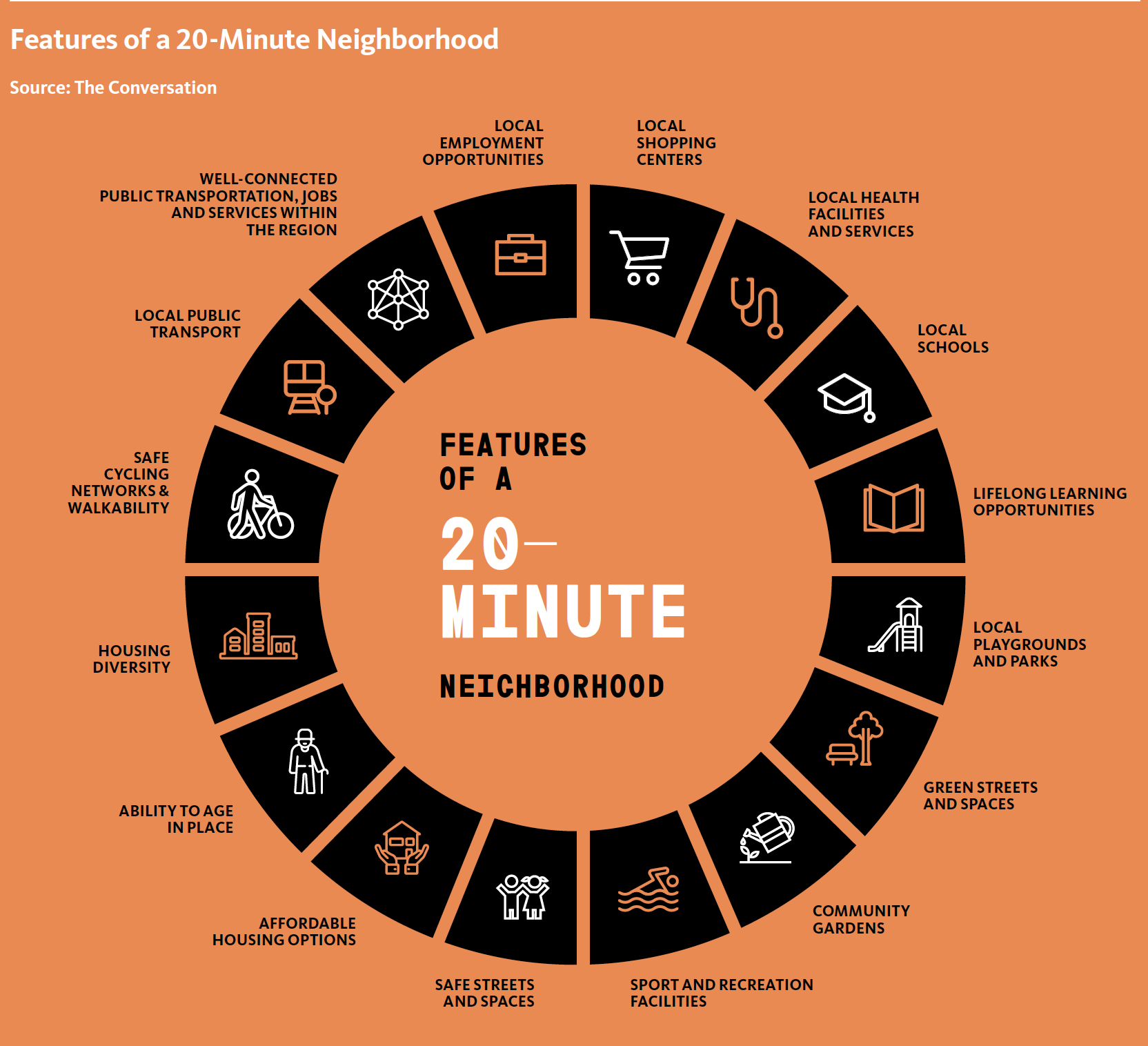
Workplace:
•The workplace must be a compelling destination
•Experimentation, prototypes, and learning are the new normals
•The workspace will play a critical role in fostering equity and inclusion
•The new workspace ecosystem will include “third” spaces for such things as coworking
•Investments in health and well-being will deliver value for employees
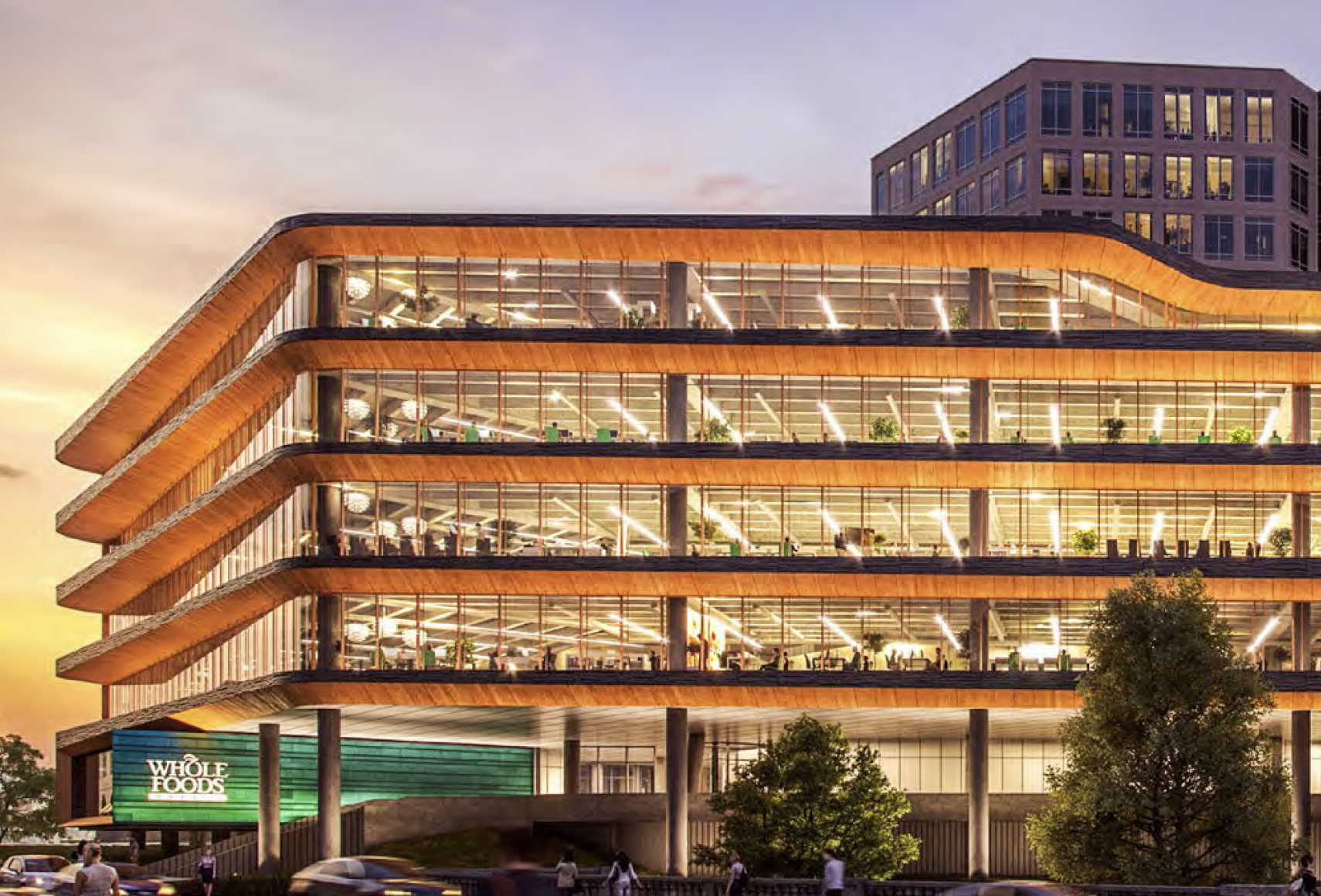
Lifestyle:
•Belonging and placemaking will bring people together
•Amenities that drive community will be highly valued
•Flexibility will become a critical investment
•Digital and physical will blend to deliver connected experiences
•Places for gathering will become neighborhood catalysts
Health:
•Design for resilience, and design that elevates human health, are one in the same
•More of the population will be over 65 than under 18 for the first time in human history
•Science organizations will set the tone for how we act in climate change and health
•Existing aging building stock cannot be ignored
•Designing “to the edges” of society will create more welcoming and supportive environments.
The report does deeper dives into each of its practices to signal dynamics and to suggest viable design strategies. Take data centers, upon which the world’s information, research, financial, and ecommerce grids increasingly rely: while acknowledging that hyperscale data centers account for half of the total investment in that sector, Gensler hops on the edge bandwagon, proclaiming edge data centers as “the next frontier” that will feed the growth of next-generation technologies. This sector is also looking for ways to reduce its energy consumption and carbon footprint by embracing low-impact materials and energy recovery. Gensler talks up the benefits of designing data centers for immersive cooling systems that submerge servers in liquid.
Related Stories
| Feb 16, 2012
Summit Design + Build begins build-out for Emmi Solutions in Chicago
The new headquarters will total 20,455 sq. ft. and feature a loft-style space with exposed masonry and mechanical systems, 15 foot clear ceilings, two large rooftop skylights and private offices with full glass partition walls.
| Feb 16, 2012
Highland named president of McCarthy Building Companies’ California region
Highland moved into this new role in January 2012 following a six-month transition period with Carter Chappell, the company’s former president, California region.
| Feb 16, 2012
Big-box retailers not just for DIYers
Nearly half of all contractor purchases made from stores like Home Depot and Lowe's.
| Feb 16, 2012
4.8-megawatt solar power system completed at Jersey Gardens Mall
Solar array among the largest rooftop systems in North America.
| Feb 15, 2012
Fourth-generation Ryan to lead Ryan Companies AE team
Ryan leads a team of eight architects, four civil engineers, two landscape architects and two virtual building specialists in their efforts to realize their customer’s vision and needs through Ryan’s integrated project delivery system.
| Feb 15, 2012
NAHB sees gradual improvement in multifamily sales for boomers
However, since the conditions of the current overall housing market are limiting their ability to sell their existing homes, this market is not recovering as quickly as might have been expected.
| Feb 15, 2012
Skanska secures $87M contract for subway project
The construction value of the project is $261.9 M. Skanska will include its full share, $87 M, in the bookings for Skanska USA Civil for the first quarter 2012.
| Feb 15, 2012
Code allowance offers retailers and commercial building owners increased energy savings and reduced construction costs
Specifying air curtains as energy-saving, cost-cutting alternatives to vestibules in 3,000-square-foot buildings and larger has been a recent trend among consulting engineers and architects.
| Feb 15, 2012
Englewood Construction announces new projects with Destination Maternity, American Girl
Englewood’s newest project for Wisconsin-based doll retailer American Girl, the company will combine four vacant storefronts into one large 15,000 square-foot retail space for American Girl.
| Feb 14, 2012
Angelo State University opens doors to new recreation center expansion
Designed by SmithGroup, the JJR_Center for Human Performance offers enhanced fitness options, dynamic gathering space.


